Seal your place in history with this Old World beginners guide
Understand these essential concepts to ensure your kingdom's survival.
Old World is a much-needed new player in the field of historical 4X games—too long has Sid Meier’s name hung over every meaningful entry in the genre like the eternal ghost of a despotic emperor. This hex-based strategy epic—which sees you lead an ancient kingdom through 200 years of politics, conquests, and family feuds—was designed by Civilization IV designer Soren Johnson, and you can feel that lineage running through it.
But Old World adds plenty of spokes to the 4X chariot wheel. It’s full of great ideas and systems that make it feel pacier and less menial than many of its peers, which means there are quite a few things you’ll have to learn. That's where this Old World guide for beginners comes in.
Old World guide: The things all budding rulers must master
Shrines and paganism
It’s unbecoming for a kingdom circa 600BC not to adopt a religion. Even the most zealous of atheists would have to admit that, at the very least, it’s an effective tool of control.
Early in the game, each kingdom has its own flavour of paganism which gets founded upon building your first shrine. The only way to spread paganism to other cities is by building a shrine next to a city. Even if you’re not committed to developing a religion, shrines are a great way to increase culture, science, and other key resources. They also help you stack those adjacency bonuses (more on those later) early in the game.
You can only build one of each shrine, initially, so you can try building one per city so each city reaps the benefits, or focus on improving a single city with multiple shrines.
Founding your own religion
The biggest gaming news, reviews and hardware deals
Keep up to date with the most important stories and the best deals, as picked by the PC Gamer team.
A common religion is a great way to improve relations in your court and with other kingdoms (as well as offering bonuses to culture, happiness, and granting access to unique buildings and wonders).
There are a few ways to adopt a state religion. You can legitimise your pagan faith as your state religion once you research Citizenship, which lets you pass the Divine Rule law. But pagan religions don’t get the same number of improvements nor the ability to spread (via Disciples) like more powerful 'World' religions.
The four world religions have different prerequisites, with two appearing earlier in the game and two later. Here are the requirements for founding each religion, in the general order they appear:
- Zoroastrianism: 2 shrines, 2 apprentice acolytes
- Judaism: 2 pastures, 2 ranchers, Labor Force tech
- Christianity: 12 Citizens, 1 Jewish city, 2 global Jewish cities, Metaphysics tech
- Manichaeism: 2 global Zoroastrian cities, 2 global Christian cities, Monasticism tech
So don’t worry if you miss the boat on founding Zoroastrianism and Judaism early on: you can still found Christianity or Manichaeism later.
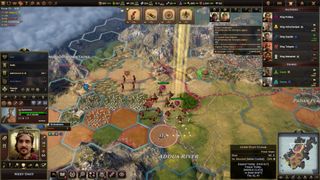
How to increase orders and legitimacy
One of the new systems Old World introduces is 'Orders'. These dictate the number of actions you can carry out per turn. Whether moving units, besieging cities, building roads, assigning tutors to your kids or brown-nosing your powerful neighbours, everything uses them.
Orders affect all your actions, making them one of the most important resources in the game. No matter your strategy, increasing your order count should be a high priority, and you can do so using the following methods:
- Each citizen in your kingdom increases Orders by 0.1
- Increase your Legitimacy, which is achieved by: fulfilling the 'Ambitions' of your leader (fulfil 10 of these to win the game), making certain decisions in diplomatic and personal events, earning higher cognomens ('The Strong', 'The Intrepid', earned by reaching certain statistical milestones such as exploring a certain amount of land or killing a certain number of units, and building wonders.
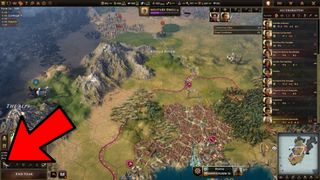
Undo and redo moves
4X games haven’t historically been too forgiving of foolish missteps. A wayfaring scout wandering near a rival’s territory could lead to a centuries-long feud, while the effects of changing laws often aren’t clear until you actually do it.
Old World takes a much more relaxed approach, letting you undo and redo orders in a single turn as much as you like. Newcomers should exploit this as much as possible. Not only is it a good way of undoing mistakes or testing the waters for war, but you can use it to scout out what’s beyond the fog of war in one direction before undoing it then going off elsewhere.
It’s cheeky, sure, but a great way to test out different outcomes and familiarise yourself with the game (once you get more confident, you can always switch the feature off for your next game).
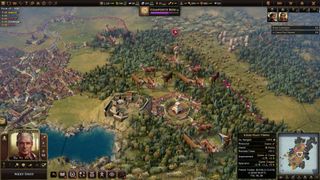
Build in clusters
Borrowing one of Civ 6's innovations (which, to give credit where due, was itself nabbed from the Vox Populi mod for Civilization V), Old World’s city improvements rely heavily on adjacency bonuses. That means you need to be meticulous with your town planning.
Resource-harvesting improvements like farms, pastures, quarries, and mines get small yield bonuses when placed next to each other. You can stack these bonuses by placing, for example, granaries next to clusters of farms, which will generate further food and growth based on any farms they’re near.
Shrines are another great source of adjacency bonuses in the early game. As you can see in the picture above, I put a Shrine of Vesta—which generates 10 gold per adjacent resource—between three deer camps, which nabs me 30 gold per turn. Not bad.
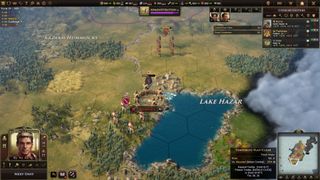
Reserve those city sites, or the enemy will
Cities in Old World can only be built on dedicated 'City Sites'. While that spares you the mental tangles of trying to find that perfect tile on which to found a new city, it also means city-building space is at a premium.
Instead of dedicating all your production into building settlers to forward-settle with, you can effectively reserve those city sites by stationing your military units on them. Do this quickly, though, because the AI is very aware of this sneaky strategy and will seek to do the same. Once your unit is on that city site, enemies would need to declare war to oust you from it, which they’re rarely willing to do.
A side note: You can build cities on any of the tiles surrounding a city site that have the small hut-like buildings around them, giving you some wiggle room about city placement and which resources in the vicinity you want to gather.
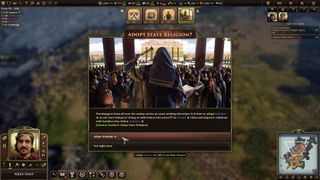
A chip off the old Civ monument
If all the above sounds daunting, Civilization veterans should take comfort in knowing that if you’ve played a Sid Meier historical marathon, you should settle into a rhythm with Old World quite quickly.
Old World is its own game with its own complex rules, but it also contains plenty of systems that fork directly off from Civilization. Accrual of resources, adjacency-based town planning, the role of workers, the creation of trade networks via roads and rivers, the combat, even the religion system, should all be broadly familiar.
And if you’re not sure about anything, you can press the middle mouse button to lock a pop-up window, then hover over any hyperlinked text in that window to get further explanation on a given rule or system. You can even get pop-ups within pop-ups, explaining everything you need within a couple of middle mouse clicks.
With this knowledge, you’re ready to take your place at the helm of one of the ancient world’s greatest families and plot your path to victory. Be bold, be patient, and be prepared to click that 'undo' button a lot.
Robert is a freelance writer and chronic game tinkerer who spends many hours modding games then not playing them, and hiding behind doors with a shotgun in Hunt: Showdown. Wishes to spend his dying moments on Earth scrolling through his games library on a TV-friendly frontend that unifies all PC game launchers.
Most Popular

